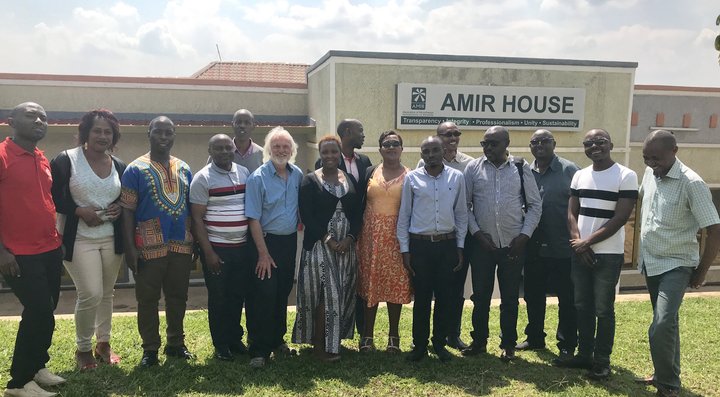Paddy O’Reilly from Dublin was my first “other,” as I recall. Six hundred of us, ages 11 to 18, began every school day with the 9 a.m. “assembly,” consisting of a hymn and a prayer, a Bible reading and any announcements. Paddy, meanwhile, sat isolated in a classroom, since Catholics didn’t attend the Anglican-based gathering. He might have shared his otherness with a couple of Jewish kids, I forget. This was the norm for state-run grammar schools in the fifties in the UK.
I’ve dubbed many groups—consciously or unconsciously—as “the other” over the years, as I suppose we all have. Living in the East End of London in my late teens brought me into contact with Jews, whose otherness only really went away after living for four years in a group house headed by a Jewish couple. In New Zealand (where I lived for four years after graduating from college), Maoris were “other”—until I married one. Later, working for the Canadian Department of Indian Affairs, Haida, Salish, Gitxsan, Tsimshian and other indigenous people were other—until I worked alongside them, got to know them as individuals and, unconsciously, “normalized” them. None of these groups were enemies as such, but the old Jewish saying seems to fit: “An enemy is someone whose story you do not know.”
Our ancestors lived in groups of perhaps 100 or 200 people until the agricultural revolution, starting some 10,000 years ago, changed all that. But we’re still to see the world through our “us” and “them” filter. Me, my people, that’s the norm. Those, the other tribe—who may look different, speak differently, dress differently, worship differently—they’re the odd ones, the other. A Martian anthropologist on a field trip to Earth would see just one species of humans—defining species as creatures that can reproduce successfully. Skin color, religion, language, all the rest of our differences might be noted as superficially interesting, but nothing important in the grand scheme of things. (Linguist Noam Chomsky claimed that a Martian scientist “might reasonably conclude that there is a single human language, with differences only at the margins.”)
Sometimes, of course, roles are reversed and I’m the other. This time last year I was in Rwanda on a volunteer gig, working with that country’s umbrella organization for microfinancing. The second day, I’d given the 20-odd folks I was training an assignment. As I looked around the table, I had this unexpected realization: They’re all black! Well, duh! What did I expect in the middle of Africa? Yet somehow I’d been blind to the fact that they weren’t “the other.” Instead, I was.

Whitey and friends in Rwanda.
The protests following George Floyd’s death have been a wake-up call. Despite my view of myself as a progressive “I’m not racially prejudiced!” liberal, to be silent after the Floyd’s murder—as I have been after so many death of blacks at the hands of peace officers (!)—is being part of the problem, not part of the solution. My wife Louisa Rogers has taken it on herself to humanize some of the victims of police brutality (see here), starting with Eric Garner, asphyxiated by a NYPD officer in 2014, setting off the “Black Lives Matter” movement.
Until we, as a nation, come to terms with this, we’re a broken country. Until I, as an individual, own to my own biases and prejudices, I have work to do. Until I stop seeing otherness—whether in homeless people right outside my window, in gun-toting Trumpists, or in hell-fire evangelicals—I’m incomplete. I’m “the other.” Time to move on.
I was heartened by the display of solidarity last Monday in front of the EPD, when Humboldt police chiefs universally condemned George Floyd’s murder. (Barry Evans)
CLICK TO MANAGE